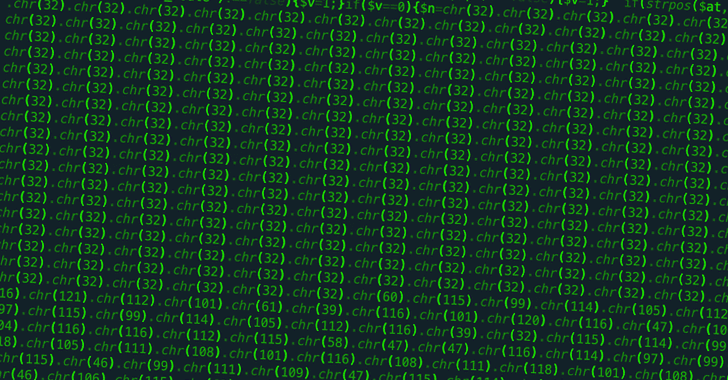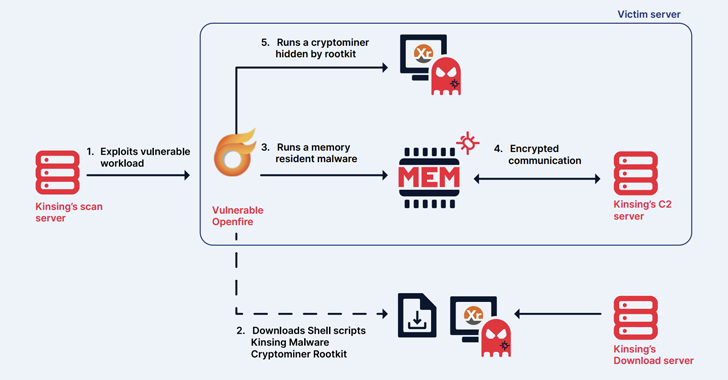Cryptojacking Group TeamTNT Suspected of Using Decoy Miner to Conceal Data Exfiltration

The
cryptojacking
group
known
as
TeamTNT
is
suspected
to
be
behind
a
previously
undiscovered
strain
of
malware
used
to
mine
Monero
cryptocurrency
on
compromised
systems.
That’s
according
to
Cado
Security,
which
found
the
sample
after
Sysdig
detailed
a
sophisticated
attack
known
as
SCARLETEEL
aimed
at
containerized
environments
to
ultimately
steal
proprietary
data
and
software.
Specifically,
the
early
phase
of
the
attack
chain
involved
the
use
of
a
cryptocurrency
miner,
which
the
cloud
security
firm
suspected
was
deployed
as
a
decoy
to
conceal
the
detection
of
data
exfiltration.
The
artifact
–
uploaded
to
VirusTotal
late
last
month
–
“bear[s]
several
syntactic
and
semantic
similarities
to
prior
TeamTNT
payloads,
and
includes
a
wallet
ID
that
has
previously
been
attributed
to
them,”
a
new
analysis
from
Cado
Security
has
revealed.
TeamTNT,
active
since
at
least
2019,
has
been
documented
to
repeatedly
strike
cloud
and
container
environments
to
deploy
cryptocurrency
miners.
It’s
also
known
to
unleash
a
crypto
mining
worm
capable
of
stealing
AWS
credentials.
While
the
threat
actor
willingly
shut
down
their
operations
in
November
2021,
cloud
security
firm
Aqua
disclosed
in
September
2022
a
fresh
set
of
attacks
mounted
by
the
group
targeting
misconfigured
Docker
and
Redis
instances.
That
said,
there
are
also
indications
that
rival
crews
such
as
WatchDog
might
be
mimicking
TeamTNT’s
tactics,
techniques,
and
procedures
(TTPs)
to
foil
attribution
efforts.
Another
activity
cluster
of
note
is
Kiss-a-dog,
which
also
relies
on
tools
and
command-and-control
(C2)
infrastructure
previously
associated
with
TeamTNT
to
mine
cryptocurrency.
There
is
no
concrete
evidence
to
tie
the
new
malware
to
the
SCARLETEEL
attack.
But
Cado
Security
pointed
out
that
the
sample
surfaced
around
the
same
time
the
latter
was
reported,
raising
the
possibility
that
this
could
be
the
“decoy”
miner
that
was
installed.
The
shell
script,
for
its
part,
takes
preparatory
steps
to
reconfigure
resource
hard
limits,
prevent
command
history
logging,
accept
all
ingress
or
egress
traffic,
enumerate
hardware
resources,
and
even
clean
up
prior
compromises
before
commencing
the
activity.
Like
other
TeamTNT-linked
attacks,
the
malicious
payload
also
leverages
a
technique
referred
to
as
dynamic
linker
hijacking
to
cloak
the
miner
process
via
a
shared
object
executable
called
libprocesshider
that
uses
the
LD_PRELOAD
environment
variable.
Persistence
is
achieved
by
three
different
means,
one
of
which
modifies
the
.profile
file,
to
ensure
that
the
miner
continues
to
run
across
system
reboots.
WEBINAR
Discover
the
Hidden
Dangers
of
Third-Party
SaaS
Apps
Are
you
aware
of
the
risks
associated
with
third-party
app
access
to
your
company’s
SaaS
apps?
Join
our
webinar
to
learn
about
the
types
of
permissions
being
granted
and
how
to
minimize
risk.
The
findings
come
as
another
crypto
miner
group
dubbed
the
8220
Gang
has
been
observed
using
a
crypter
called
ScrubCrypt
to
carry
out
illicit
cryptojacking
operations.
What’s
more,
unknown
threat
actors
have
been
found
targeting
vulnerable
Kubernetes
container
orchestrator
infrastructure
with
exposed
APIs
to
mine
the
Dero
cryptocurrency,
marking
a
shift
from
Monero.
Cybersecurity
company
Morphisec,
last
month,
also
shed
light
on
an
evasive
malware
campaign
that
leverages
the
ProxyShell
vulnerabilities
in
Microsoft
Exchange
servers
to
drop
a
crypto
miner
strain
codenamed
ProxyShellMiner.
“Mining
cryptocurrency
on
an
organization’s
network
can
lead
to
system
performance
degradation,
increased
power
consumption,
equipment
overheating,
and
can
stop
services,”
the
researchers
said.
“It
allows
threat
actors
access
for
even
more
nefarious
ends.”











